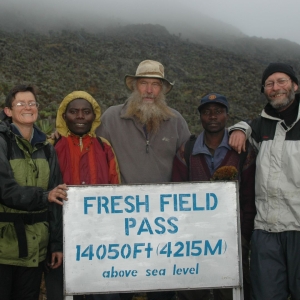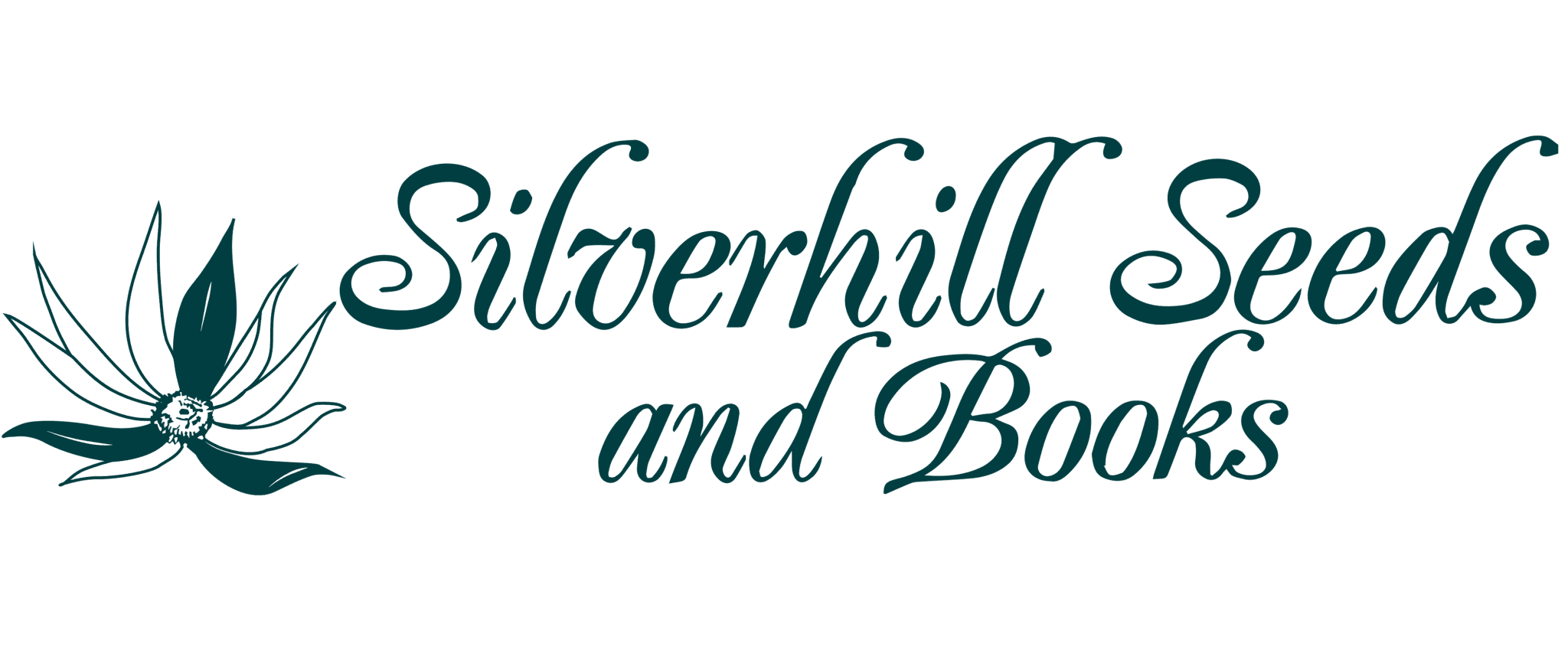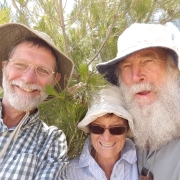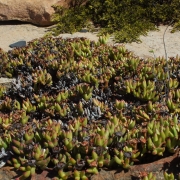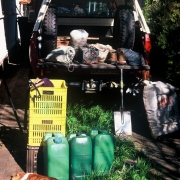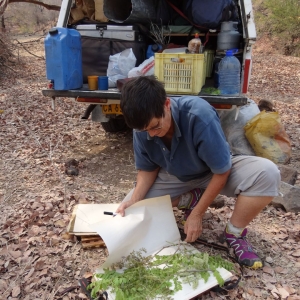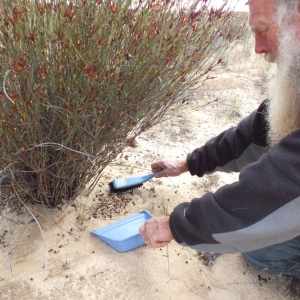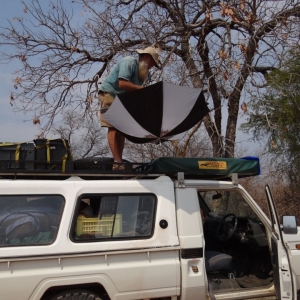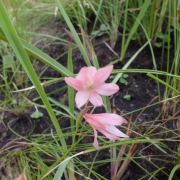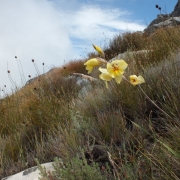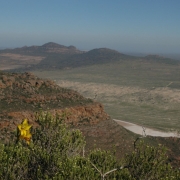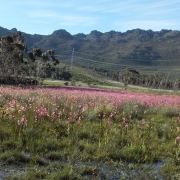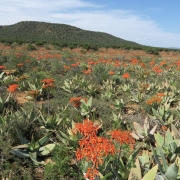From The Archives – Trip to the Ruwenzoris
By Rod Saunders
The belief that the source of the Nile lay amongst snow clad mountains on the equator goes back 2500 years. In the 5th century BC Aescylus wrote of “Egypt nourished by melting snow” Aristotle too, wrote of “mountains of silver lying to the south west of the Nile”. “Not so”, said Herodotus “it is too hot for snow to exist at those latitudes”. This attitude existed right until the mid 19th century when the first sighting of Mt Kenya and Kilimanjaro by Europeans, confirmed the existence of snow capped peaks on the equator.
During the 2nd century AD Ptolemy produced a remarkable map in which he depicted the Nile flowing from 2 lakes which were fed by a range of mountains extending in an east west direction. He named them “Lunae Montes” – the mountains of the moon.
The head waters of the Nile remained elusive to Europeans until 1888 when two members of HM Stanley’s expedition were camped somewhere west of Lake Albert and caught sight of a range of snow capped mountains to the south east. When Stanley saw the mountains, he gave them the name Ruwenzori, which means “Mountain of Snow”.
The Ruwenzoris are Africa’s greatest and highest range of mountains extending along the west border of Uganda for about 120km. They are complex in their layout and 6 of the massifs have glacial ice caps. The highest peak is Mt Stanley with the twin peaks of Alexandra and Margherita.
Sometime in the second half of 2005 we had dinner with Peter Linder during one of his visits to South Africa from Zurich University in which he mentioned almost casually that he was visiting the Ruwenzoris with one of his PhD students on a field trip and if anyone was interested, he would like the company. We confirmed that he was serious and promptly booked tickets to Entebbe. Early January 2006 saw us picking up a car in Kampala and negotiating the city traffic (chaotic), looking for roads, unnamed, and addresses unnumbered! By a miracle Rachel guided us to the hotel, and we met up with our companions, Peter and his student Berit. The following day we drove to Kasese at the foot of the Ruwenzoris, found an hotel, and prepared our food and fuel for 9 days, and somewhat incongruously in the stifling heat, crampons, ice axes, ropes, cold weather and snow gear! The next morning after a short drive to the Ruwenzori Mountain Services (RMS) headquarters at Ibanda, we finally arrived at the foot of the mountains. Our lives were taken charge of for the next 9 days – we were allotted 3 guides and 15 porters, and 2 hours later we set off. The first part of the journey took us along the river, through rural Uganda, past gardens of bananas, coffee, taro, and occasionally vanilla. After about an hour, we entered the National Park with long grass and thickets of pink flowered Acanthus pubescens reaching well over our heads. Erythrina abyssinica in full bloom provided splashes of colour and were being visited by numerous sunbirds. As we got closer to the mountains, the vegetation changed to equatorial rain forest, great buttressed trees reaching up 30 to 40 meters in height. The ground storey of vegetation was a combination of Impatiens runsorrensis, Begonia meyeri-johannis, 2 species of Piper – P capense and P guineense, and various stinging nettles. Where a gap in the trees afforded a view over the forest, large trees of Symphonia globulifera were blooming with masses of red flowers. One of the more dominant trees familiar to us was Polyscias fulva, with its distinctive bicoloured foliage. Somewhere we had to gain 1200m to attain the first hut at Nyabitaba. The path meandered along the contour for a while,a nd then reached a ridge where a serious ascent followed, unrelenting and steep. Subtly at first, the tropical forest changed, and at the end of the ascent we found ourselves in afromontane forest with many familiar species that we were able to identify. Ilex mitis, Olea capensis, Podocarpus latifolius, Faurea saligna, Prunus africana, Cussonia arborea and Maytenus acuminata. A highlight of the day was seeing our first Scadoxus cyrtanthiflorus, not in flower, but never the less, unmistakable and exciting to see. My accompanying guide was somewhat scornful of my excitement, and said “tomorrow you will see many, and in flower!”
At the head of the ridge we reached the hut beautifully situated in the forest – a most welcome sight. Nearby was a water pipe bringing water from the lake above, under which we were able to squat and douse ourselves with ice cold water. After the hot ascent, most welcome. Nearby we noticed a number of shrubs which we later identified later as Pentas zanzibarica var intermedia, covered in white and pinkish flowers.
The next day commenced with a steep half hour drop down to the confluence of the Mbuku and Bjuku Rivers which we crossed by means of a well constructed suspension bridge. Here we saw our first giant Lobelias – plants of L giberroa surrounded the bridge in large numbers, some in flower, some in bud and some in seed.
I found the lack of seasonality a bit disconcerting – one nearly always found a population of plants flowering, seeding or sending up new growth, all at the same time.
From the bridge the path set off determinedly, to gain 1000 meters before reaching our next destination at the John Matte hut situated at some 3500 meters. We continued through the montane forest, and now we began to see huge swathes of Scadoxus cyrtanthiflorus under the trees, some going dormant and shedding their old leaves, many flowering and some in green seed. The plants grow in much the same way as Clivia caulescens and sometimes have stems up to 1m long. After some hours walking up we noticed a gradual change and the forest was giving way to bamboo Sinainaria alpina. Any opening in the bamboo was covered in a showy bramble Rubus steudneri. I made the mistake of picking some berries, and my guide muttered darkly that is was now going to rain which it promptly did! It carried on raining or snowing or hailing for much of the time that we were on the circuit – not unusual I am told even if it is supposed to be the “dry” season! Another exciting plant we saw in this region was Arisaema milbraedii, the “Snake’s head lily”, a striking aroid some 0.5m in height. A short slog up a muddy slope brought us into the open and a view of the John Matte hut where we spent the night.
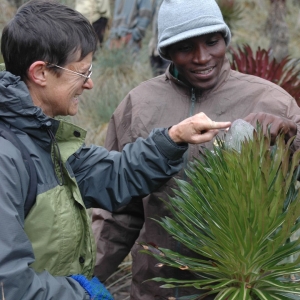
Rachel & Sam examining a Lobelia
We particularly looked forward to the next day’s walking as it would take us into the afro-alpine zone with its bizarre flora. On setting off we left the Ericas behind they became smaller and were only on the warmer ridges. Gradually the valley floor became covered with Helichrysum stuhlmanii bushes where it was better drained, and Alchemilla and moss where it was flatter and more water logged. After an hour or two’s walking gradually uphill, we came over a low neck and there before us in the long flat valley were these outrageous plants – Lobelias with rosettes two men could barely encompass with their arms and flower spikes reaching 4 meters into the sky, Dendrosenecios over 8m tall and looking like trees that children draw. The valley floor, however, was boggy, and our route went through the middle of it – wet muddy and cold feet were the order for the next 6 days. Over the next 3 to 4 hours walking, the vegetation became denser, the Dendrosenecios bigger and more closely packed, and evermore Lobelias sometimes growing on the valley floor in their thousands. The plants matched their surroundings – the vertical walls of the valleys reaching loftily into the clouds. After a short climb we reached Lake Bujuku, which we were told is surrounded by snow capped peaks, but because of the cloud cover we were denied a view of the summits. Huge screes met the waters edge on the far shore and everywhere, large Dendrosenecios. We horrified our guides by saying that we wanted to swim in the Lake, but we couldn’t reach the water because of knee deep mud. From the Lake it was only a short walk to the Bujuku Hut, situated at 4000m. All of us were looking for a bit of extra air, and a quick walk up the slope to fetch water left us breathless, hands on knees, and gasping. We settled down outside the hut with a cup of tea and contemplated our surroundings. As so often happens, shortly before sunset, the clouds cleared and we were treated to a view of the surrounding peaks – behind us Mount Speke, to the right Mount Stanley and ahead of us, Mount Baker, all of them snow clad and capped with glaciers.
The next day we spent botanising around the hut and up Stuhlmann’s Pass. The ficklenss of the weather was impressed upon us. While we were having tea in a rock shelter over the top of Stuhlmann’s pass, it started to rain. Within minutes it turned to dry hard frozen sleet, and then it started to snow, and did so for most of the day until the vegetation and all of the slopes had a substantial layer of snow.
Olav Hedberg, a plant physiologist knowledgeable on afro alpine plants, wrote that the Ruwenzori is a region where it is summer every day and winter every night, and snow may fall on any of 365 days of the year.
After our day at Bujuku we made ready to walk to Elena Hut which is at the foot of the glacier coming off Mt Stanley, and situated at 4430m in a zone where vascular plants do not grow and only mosses and lichens occur. Each step of the trail gained us altitude and more and more breath taking views of surrounding peaks and valleys. At the top of the pass to the hut we came upon an area littered with large boulders and almost entirely covered in lichen and moss, with only a few Dendrosenecios managing to survive. On ascending further, these too disappeared and we came to steep glacier polished rocks, slippery with ice and snow. Proceeding cautiously and very slowly, we reached the hut, perched on slabs of black rock with the glacier looming over it.
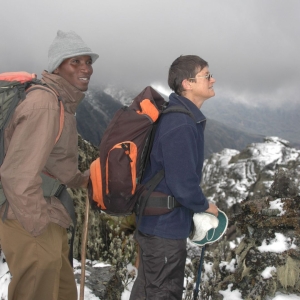
Having come so far, Peter, Berit and I were keen to climb Marghuerita, the highest peak in the Ruwenzoris, while Rachel elected to proceed slowly down to Kitandara Hut. We were up at 5.30am the next day for an early start and after an enjoyable but icy trip, we returned to the hut at 2 in the afternoon, exhausted. After sustenance and lots of strong coffee, we felt strong enough to tackle the descent to Kitandara Hut. We retraced our steps over the treacherous rocks and reached the top of the Scott Elliot – back into the land of vegetation. The descent into the Kitandara Valley was dramatic. Below us the twin lakes beckoned enticingly and every step the vegetation became thicker and more interesting. On our left the sheer walls of Mt Baker rose vertically 1000m from the valley floor. Our guides cautioned us to speak quietly for fear of falling rocks. The number of rocks and impact craters on the valley floor were testimony to the danger.
As we descended further we saw plants of the unusual and striking Hypericum bequaertii, a Ruwenzori endemic. The trees were flowering prolifically and were covered in 3cm red bell flowers which hang like inverted tulips. On reaching the first Lake we stripped off our clothes and took a hasty dip in the lake. The water was ice cold and we didn’t linger, but felt refreshed afterwards. The hut itself was beautifully situated overlooking the second lake and surrounded by Dendrosenecios and Hypericum bequaertii. We made an early start the next morning to enable us to get over the Freshfield Pass at 4282m and make our way down to the next hut, the Guy Yeoman hut, at 3261m. We paused at the top of the pass to get our breath, make tea and admire the view, and then began the slippery muddy descent to the valley floor, and out of the afro-alpine zone back into the Erica forest. The forest was like something out of Lord of the Rings, with huge distorted Erica trees 20 to 30m tall. The trees were draped with Old Man’s Beard (Usnia), sometimes hanging down for over a meter. The forest floor was covered in moss and where there were openings along the river and too wet for Ericas, giant Lobelias grew in their thousands. At this stage the sun obligingly appeared and it made the final stages of the walk to the Hut an other worldly experience.

We arrived at the hut muddy and filthy, and all made for the river to wash before the temperature dropped and before the ritual evening sundowner!
The next morning it was pouring with rain, and our guides, normally laid back, were now pressing us to pack and hurry, for the rivers were rising and we had 3 major river crossings to make. We managed the journey down to our last hut relatively unscathed. Rachel fell into the river but was grabbed by her attentive guide. Peter had a bad slip on some vertical rocks and was also grabbed by an attentive guide. An unfortunate porter got washed off his feet – he was rescued, but alas lost one wellington boot and the pack that he was carrying. We arrived at Nyabitaba Hut late in the afternoon, wet, muddy and bedraggled, but thankful that we were all safe. We made good use of the water pipe again, this time not to wash off sweat, but to try to get rid of some of the persistent mud all down our legs and on our boots.
The short descent the next day took us out of the mountains and back to the RMS offices at the base. The previous 9 days seemed dream like and we all agreed that it was one the best walks that we had ever done.
